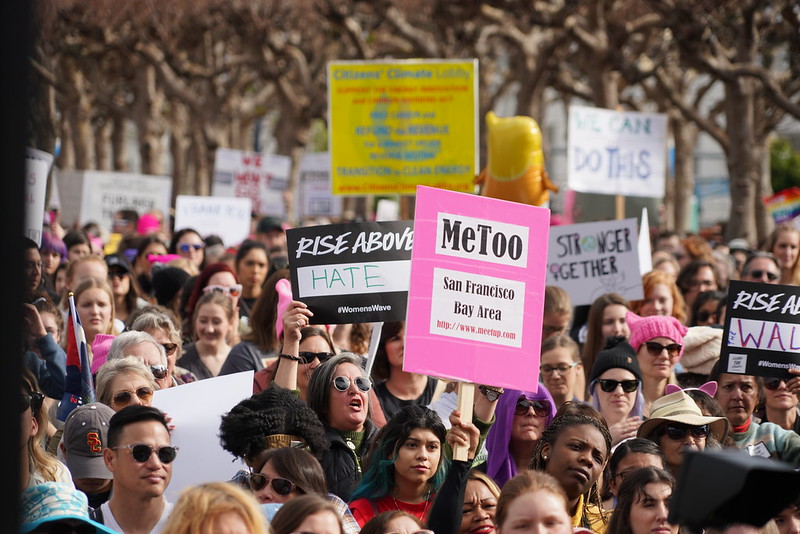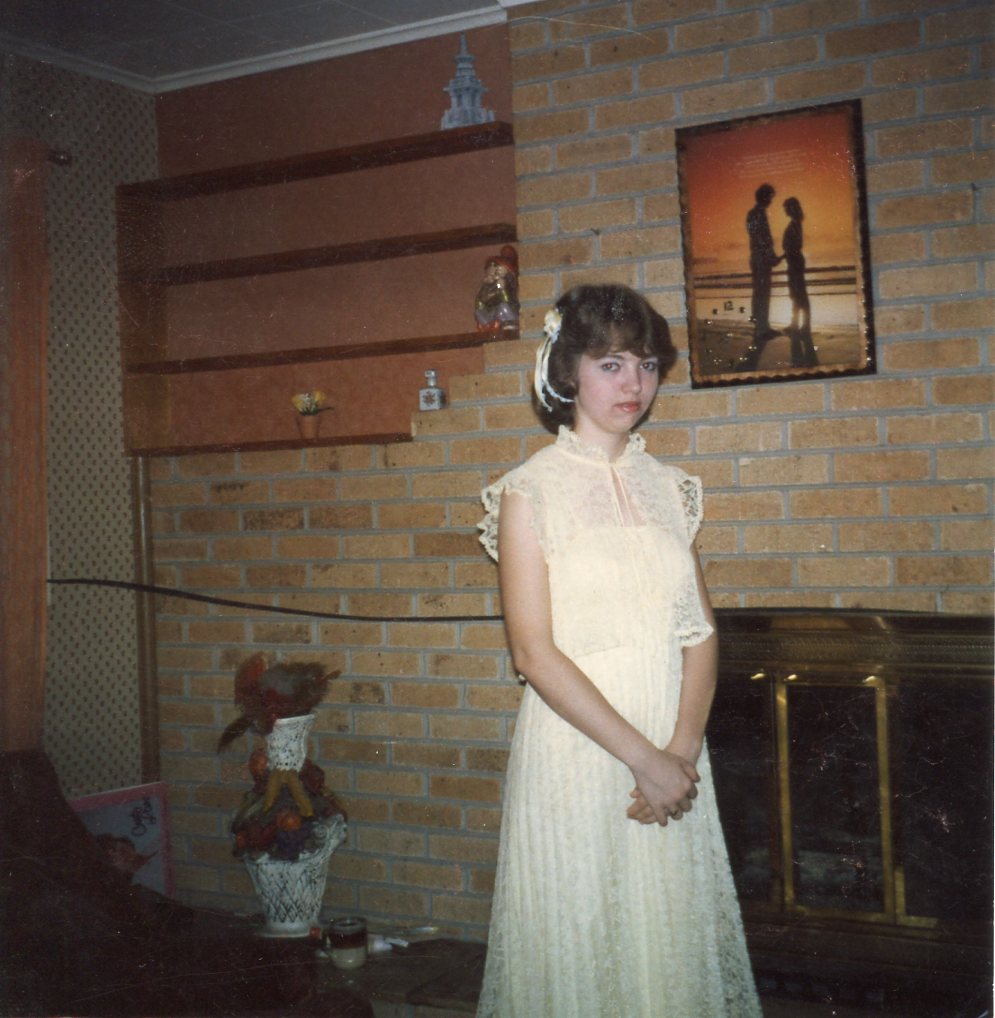Women have been at the forefront of the movement to abolish the death penalty because they have every reason to oppose this inhumane punishment.
Lisa Montgomery was executed by lethal injection on Jan. 13 at a facility in Terre Haute, Ind., that bears the Orwellian name “Federal Corrections Complex.” The first woman executed by the federal government since 1953, Montgomery was among 13 inmates killed in the waning days of the Trump administration.
Kelley Henry, one of the lawyers who tried to save Montgomery’s life, noted in a statement that “our Constitution forbids the execution of a person who is unable to rationally understand her execution.” She described her client as a “victim of unspeakable torture and sex trafficking” who suffered from long-term debilitating mental disease, including psychosis and auditory hallucinations.
Montgomery’s death sent me in search of a feminist case against the death penalty.
The Movement to Abolish the Death Penalty
For decades, the movement to abolish the death penalty has been driven by strong and outspoken women who serve as public defenders, lawyers, activists, elected officials, judges, teachers and scholars, and who are the mothers, sisters and partners of the victims of brutal killings and the people who have been convicted of those killings.
Nearly 20 years ago, in “A Feminist Look at the Death Penalty,” published in Law and Contemporary Problems, Amy E. Pope pointed out that in all the debate over the death penalty, “no one has suggested how a feminist perspective might improve the discussion.” She observed that the decision to impose the death penalty presents “traditionally male ways of looking at the problem … that offer only limited views of the world, boiling choices down to black and white.” She reasoned that “imposing a feminist lens on the procedure will round out the largely one-sided argument” by paying “attention to bias and power disparity” without “perpetuating a system of white, male, middle-class bias with the most extreme results for all marginalized groups.”
Since then, few scholarly works have been written specifically developing a feminist case against the death penalty. Nevertheless, a coherent and compelling feminist abolitionist perspective does emerge from the work and the words of many feminist activists, lawyers and scholars.
Speaking at a women’s studies conference in 2015, civil rights activist and feminist theorist Angela Davis observed, “What has been done in this country has been to try to transform capital punishment into something so rationalized that it can be considered humane. Humane forms of capital punishment—to me that [is] oxymoronic. But yet the debates have been … [about] the most humane way to kill someone.”
Punishment is connected to “the lack of education or illiteracy, economic injustices, privatization of prisons and the fact that punished bodies become the sources of vast profit,” Davis continued.
And she linked racial and institutional violence to violence against women: “Violence at the hands of police, violence in prison often produces gender violence in the free world … violence against gay men, lesbians, trans, intersex people … as long as it’s okay to inflict violence against women, then so many of the other modes of violence will continue to persist.”
When Diann Rust-Tierney, who began her work on capital punishment, women’s rights and civil rights at the American Civil Liberties Union (ACLU) and now heads the National Coalition to Abolish the Death Penalty, considers her opposition to capital punishment from a feminist perspective, she thinks about “a political and social analysis that challenges existing power structures, dynamics and prescribed roles.”
For Rust-Tierney, “ending the death penalty is about dismantling power structures that, above all else, reinforce, prop up and promote a racialized caste system and gender inequality,” she said. “The death penalty must fall because it is a lie. It is a lie not unlike the lie that limits the goals and aspirations of a broad and diverse world of women and girls.”
Feminists have every reason to be suspicious of capital punishment. Death penalty laws in the U.S. were enacted by legislatures dominated by men; death sentences are sought by prosecutors who are predominately men; juries that condemn defendants to death have historically been mostly male; and judges who sentence defendants to death are overwhelmingly male.

This article originally appears in the Summer 2021 issue of Ms. Become a member today to read more reporting like this in print and through our app.
In 1972, the U.S. Supreme Court struck down capital punishment in Furman v. Georgia as being unconstitutionally arbitrary and capricious. But state legislatures promptly went to work reinstating the death penalty. By the end of 1975, in only 12 states did women make up more than just 10 percent of state legislators. The highest percentage just was in Arizona, with only 20 percent.
Over the 45 years since the reinstatement of capital punishment, juries in criminal cases have also been predominantly male. Indeed, the U.S. has a shameful record when it comes to women serving on juries. It would take until 1994 for the Court to rule in J.E.B. v. Alabama ex rel T.B. that peremptory challenges to prospective jurors on the basis of gender were unconstitutional.
State courts, too, have always been overwhelmingly male. In 2008, 75 percent of these judges were men. By 2014 the number of female state court judges had reached only 30 percent. The American Constitutional Society, which keeps track of such things, reported in a study published in 2016, “Not a single state has women on the bench in the numbers commensurate with their representation in the general population.” And the percentage of women prosecutors likewise lags far behind, at only 24 percent in 2019.
“The principles underlying feminism are wholly consistent with opposition to the death penalty,” Cassandra Stubbs, director of the ACLU Capital Punishment Project, said. “Abolitionists and feminists both reject a dehumanizing punitive, carceral approach to violence that turns a blind eye to systemic inequalities. Both seek to disrupt systems that dehumanize individuals and over-incarcerate while working to change the social conditions of injustice that contribute to cycles of violence and trauma.”
Since 2006 Stubbs has represented death row defendants and inmates in trials and appeals in Alabama, Mississippi, Louisiana, South Carolina, North Carolina and Tennessee. She has worked to expose the persistent racial disparities in capital punishment and to refute the myth that the death penalty deters future murders.
“Centering the voices and experiences of my clients, their families and their communities is necessary to confront the dehumanizing campaign of the prosecution and save the lives of our clients,” she said. “This approach of using deeply personal investigation draws heavily from the narrative lessons and traditions of feminists, who have long challenged the patriarchal presentation of history from a single white, male viewpoint.”
Kimberly J. Cook, a member of the editorial board of Wrongful Convictions Law Review, said, “The feminist case against the death penalty has several dimensions. No matter who is sentenced to death, women in their lives are severely impacted. Mothers of death row inmates often feel a profound sense of shame and guilt, and are often judged as unfit mothers due to the sexist cultural shame placed on women when their children do something wrong.”
Cook, who has studied wrongful convictions, domestic violence and restorative justice for almost 30 years, added “the infliction of this punishment is antithetical to the type of cultural change that feminist movements are trying to create; it reproduces brutality rather than resolves it.”
Stacy Mallicoat, author of Women, Gender and Crime: A Text/Reader, teaches feminist criminology and the death penalty at California State University, Fullerton. “Feminist research in the context of the death penalty gives us a unique opportunity to understand the people involved in these cases as whole beings,” said Mallicoat, “and not just from these single moments in time that have defined them as crime victims, exonerees, people on death row or those who have been exe- cuted by the state.”
Mallicoat said she views “feminism as a concern for intersectional and diverse gendered issues … [and] how we see and respond to issues, particularly ones like the death penalty, where decision-making has historically been very gendered, racially motivated, classist and heteronormative.”
“The death penalty is a punishment that was conceived of by men, and it continues to be largely implemented by men.”
—Sandra Babcock, lawyer
I first met Sandra Babcock in the summer of 1998 in San Jose, Costa Rica, where we were both testifying at a hearing before the Inter-American Court of Human Rights on international aspects of the death penalty. She has been a capital litigator for 30 years and is currently helping defend eight women sentenced to death in cases here and around the world while serving as a clinical professor and faculty director of the Cornell Center on the Death Penalty Worldwide.
“I found it difficult to discern whether my opposition to the death penalty stems in part from my identity as a feminist or whether it is rather a humanist impulse,” Babcock told me recently. “I tend to think it’s the latter.”
But she was very clear: “The death penalty is a punishment that was conceived of by men, and it continues to be largely implemented by men.” She pointed out that “prosecutors in many jurisdictions have excluded women from juries in capital cases because of a belief that they will be more hesitant to recommend a death sentence.”
In Texas, Babcock is part of the legal team that is currently trying to save the life of Erica Sheppard, a Black woman who was sentenced to death for a crime she committed at the age of 19 after enduring a lifetime of sexual and physical violence. According to Babcock, Sheppard had a “horribly inept lawyer” who presented almost no mitigating evidence.
“The entire penalty phase defense lasted little over an hour—less time than a yoga class,” she said. The jury never learned about the scope or impact of the trauma Sheppard endured. She was prosecuted by two male prosecutors, represented by a man and sentenced to death by a male judge.
In post-conviction proceedings, a female judge reviewed evidence that was never presented at trial and ruled that Sheppard’s death sentence should be vacated. But her decision was overturned by the seven men and two women who made up the Texas Court of Criminal Appeals in 1997. On review, the federal district judge, a woman, said she would have found that Sheppard was entitled to a new sentencing hearing based on trial counsel’s ineffectiveness, but under federal law, she was bound by the decision of the Texas appeals court.
The Fifth U.S. Circuit Court of Appeals (one male and two female judges) rejected Sheppard’s claims—though one of the women dissented, writing that Sheppard’s constitutional rights were violated because her trial lawyer failed to present more than “snippets” of the “extensive abuse and trauma that she suffered throughout her life.”
Babcock admits this is only one case—“but,” she pointed out, “at least in Erica’s case, the only judges who recognized the significance of her trauma and abuse were all female.” Recently, the majority conservative U.S. Supreme Court, whose justices are six men and three women, refused to review Sheppard’s case.
More than 45 years ago, well before she was appointed to the Supreme Court, Ruth Bader Ginsburg cowrote a groundbreaking amicus brief arguing that the death penalty should not be authorized for the crime of rape.
“The historical origin of the death penalty for rape lies in the long-standing view of rape as a crime of property where the aggrieved was not the woman but her husband or father,” she wrote. “In the Southern states this view coalesced with a tradition which valued white women according to their purity and chastity and assigned them exclusively to white men.” Ginsburg’s approach helped win a historic 7–2 decision in Coker v. Georgia, ending the use of the death penalty for rape.

Some feminist abolitionists are increasingly concerned that the #MeToo movement is becoming more punitive. “Women’s criminal law activism [has] not made prosecution and punishment more feminist; [it has] made feminism more prosecutorial and punitive,” said Aya Gruber, author of the unflinching new book The Feminist War on Crime: The Unexpected Role of Women’s Liberation in Mass Incarceration. According to Gruber, “in the zeal to fight sexual misconduct, millennial feminists abandon their liberal (in the double sense of ‘progressive’ and ‘respecting individual rights’) commitments.”
As “a feminist, woman of color, defense attorney and survivor,” Gruber is baffled: “One is left to wonder how feminism became a legitimator of penalty in an era of declining faith in criminal punishment,” she said. “How did the feminist anti-violence agenda become so tethered to the tough-on-crime position? How come gender crime gets a carve-out from or even veto over criminal justice reform?”
She advances an approach that does “not view policing, prosecution and punishment as the most promising avenue toward gender equality” because they are “largely fixed institutions, with embedded authoritarian and racialized features.”
In July 2019, Rep. Ayanna Pressley (D-Mass.) co-introduced a bill to abolish the federal death penalty, declaring on Twitter in 2020 that the “death penalty has no place in a just society.”
In January of this year, as the Trump administration carried out its final three executions, Pressley co-introduced the bill again, and made a powerful case echoing what I’ve heard from other feminists: “State- sanctioned murder is not justice, and the death penalty, which kills Black and brown people disproportionately, has absolutely no place in our society,” she said. “We must finally abolish this inhumane form of punishment.”
Pressley pointed out that the United States “stands alone among its peers in executing its own citizens. The barbaric punishment denies the dignity and humanity of all people and is disproportionately applied to people who are Black, Latinx and poor.” She noted that Black people are less than 13 percent of the population but make up more than 42 percent of those on death row.
Pressley cited a study that found that at least one in 25 people sentenced to death are innocent. Her office noted in a press release that “many conservative leaders have called for an end to its use because it is costly, ineffective and inaccurate. Carrying out these executions during the pandemic has been particularly expensive, with an estimated cost of more than $900,000 per execution.”
According to a 2019 Gallup survey, American support for the death penalty has dropped 7 points since 2014 to 56 percent, down from a peak of 80 percent in 1994. When given the choice, 60 percent of those surveyed rejected the death penalty in favor of life in prison without parole. What’s significant is that the figure was 66 percent of women surveyed but only 53 percent of men.
In a recent conversation, Rust-Tierney expressed a note of optimism. “As feminist abolitionists continue to make their influence felt and connect to the broader struggles for civil and human rights, I have no doubt that we will see an end to the death penalty.”
In its place, she envisions “the seeds of a society centered on the innate worth of every human being; our connection to one another; and our collective responsibility for the safety and health of our communities, [grounded in] healing and just accountability.”
Abigail Palmquist provided valuable research assistance for this article.
Up next:








